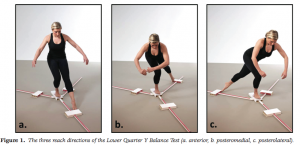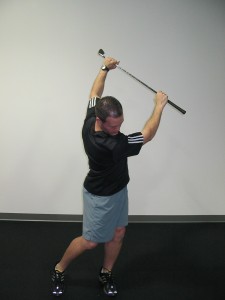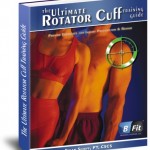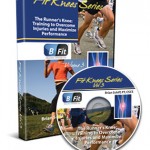Brian Schiff’s Blog
Injury Prevention, Sports Rehab & Performance Training Expert
At times, athletes I work with have shoulder or low back pain that is related to restrictions in the thoracic spine. Rotational sports rely upon adequate mobility in the thoracic spine to ensure proper force transmission throughout the body’s kinetic chain. This exercise featured in one of my recent PFP online columns is a nice corrective exercise or mobility drill that can be used to optimize t-spine mobility and resolve any asymmetries.
Keep in mind that forcing through pain or stiffness is not advisable. This exercise can be done daily or as part of the warm-up routine.
It is time to clear out some product inventory this year. To that end, I am offering a 50% off sale for one week only. This sale is on all physical products as well as e-books. I am also offering this discount on my printed version of the Ultimate Rotator Cuff Training Guide, of which I only have five remaining copies.
Simply enter code BFIT50 at checkout to save 50% on your entire order. Click Here to view all products.
This sale will end Monday July 18, so act now while supplies last.
There seems to be consistent questions, debate and studies done with respect to stretching. As the thought of more closely analyzing the quality of movement (FMS, Y-Balance testing, SFMA for example) moves to the forefront in the PT and fitness world, many search for the right mix of exercise to maximize mobility.
I count myself as a supporter and follower of the work of Gray Cook and Stuart McGill. While I may not agree 100% with all of their ideas, I generally consider them to be brilliant minds and ahead of the curve. I have been using the FMS in my practice for some time now and have also begun to incorporate Y-Balance testing as well (see pic below courtesy of the IJSPT)

The Y-Balance test may not have significant relevance to hip mobility as much as it does limb symmetry, but I included it here to illustrate my point in observing kinetic chain movement to help determine where the weak link or faulty movement pattern may be. It gives us valuable information with respect to strength, balance and mobility.
With the revelation that FAI is more prevalent than we knew (click here for my post on FAI), I am always interested in hip mobility and how to increase movement in the hip joint. Limitations in hip mobility can spell serious trouble for the lumbosacral region as well as the knee.
I currently use foam rolling, manual techniques, dynamic warm-up maneuvers, bodyweight single leg and hip/core disassociation exercises and static stretching to increase hip mobility. However, I am often faced with the question of what works best? Is less more? How can I make the greatest change without adding extra work and unnecessary steps?
Well, Stuart McGill and Janice Moreside just published a study in the May 2012 Journal of Strength & Conditioning Research that sought to examine three different interventions and how they improve hip joint range of motion. Previous work has been focused on the hip joint alone, and they wanted to see how other interventions impacted the mobility of the hip. Click here for the abstract
Golf is in the air in Dublin, OH as Tiger and the PGA have invaded my neck of the woods for the Memorial Tournament. Too bad I am on vacation missing it!! Anyway, I just read a new research article validating what many of us have been saying for years about dynamic warm-up – this time it relates to golfers.
Do you care about club head speed, accuracy and consistent ball contact? Then listen up. In the most recent edition of the Journal of Strength and Conditioning Research, Jeffrey Gergley reveals some important findings relative to a passive stretching regime coupled with an active dynamic (AD) warm-up versus just an AD warm-up and its effects on golf performance.
In a nutshell, his study involved 15 young male competitive golfers. Immediately after the warm-up, each subject was instructed to hit 10 full-swing golf shots with their driver after their normal pre-shot routine with 1 minute rest intervals between each shot. The results are as follows:
Golfers who used the 20 minute passive stretch routine in addition to the AD warm-up with golf clubs saw:
- A 4.91% decrease in club head speed
- A 5.62% decrease in distance
- A 31.04% decrease in accuracy
- A 16.34% decrease in ball contact consistency
Wow!! The take home message is this – golfers should focus their warm-up routine on active movements with the golf club emphasizing the bio mechanical range of motion needed in the golf swing itself. Using a thorough dynamic warm-up will adequately prepare golfers to hit the ball better and reduce injuries.
Want such a warm-up? Check out my Healthy Golf Shoulders E-Book for such a warm-up at www.healthygolfshoulders.com. A sample warm-up move from it can be seen below.




